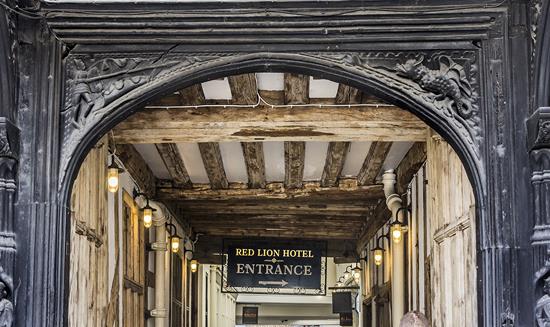Colchester's fortunes during the medieval period were closely linked to its role as a market town and centre of trade and industry. At the centre of the town was Colchester's thriving market, centred on a widened section of High Street. In 1285 it is recorded that market days were Wednesdays and Saturdays but by the 14th century there may have been a market every day for the sale of commodities including meat, fish, dairy products and grain.
The establishment of a port and settlement at the Hythe, on the bank of the river Colne, was crucial to Colchester's success as a centre for trade and exchange. The settlement was separate from the walled town of Colchester and may have been a planned settlement. The riverfront appears to have developed first, comprising warehouses and dwellings behind the quays. One of the main industries that thrived at the Hythe during the early medieval period was the fishing industry. In the late 15th century a charter of Edward IV restricted the buying and selling of imported goods to the port at Hythe which became a wholesaling centre as well as a place for shipping and storage.
Colchester was also engaged in international trade, particularly with ports in France, Germany and the Low Countries, as well as domestic ports as far afield as Cornwall, Wales and Northumberland. Imported pottery found during excavations in and around Colchester attests to strong continental trading links. Commodities being sold in Colchester include wine from Gascony, schist hones from Norway, slate roofing tiles from south-west England and Purbeck marble.
Colchester's exports included pottery, with the town producing hand-made pottery from the middle of the 11th century onwards. Excavations in 1978 to the north of the town revealed at least six early medieval pottery kilns. Two local production sites are known to have produced medieval grey ware pottery during the 13th and 14th century, at Mile End and Great Horkesley. Elsewhere, placename evidence indicating pottery production has been identified at Ardleigh, Inworth and Lexden. Documentary evidence suggests that later medieval tile kilns and clay workings were located to the east of the town at Greenstead. A medieval glass-blowers' works was recorded to the rear of one of the buildings on the west side of North Hill.
By the middle of the 13th century Colchester's cloth industry had begun to develop, with a fulling mill called Haddel Mill being recorded in 1247. Documentary evidence indicates that Colchester produced russet cloth, with fullers and dyers being recorded as working along the Colne between North Bridge and Middle Mill, and at East Bridge, but there have been few archaeological finds from the town that relate to the early medieval cloth industry.
There is also documentary evidence for leatherworking in Colchester by the end of the 13th century, with cobblers, tanners and skinners recorded in the town. Archaeological evidence for this industry comes from three sites on the outskirts of the medieval town. At Osborne Street excavations revealed 300 leather scraps dating from the late 12th or early 13th century and which appear to be waste from a shoemaker's workshop. A small group of leather fragments close to North Bridge in 1999 suggest a shoemaker's workshop at this location in the 14th century. Evidence for the town's medieval tanning industry comes from waste dumps of animal bone excavated at Middleborough, to the north of the town. 
There is little physical evidence for Colchester's medieval mills, though documentary sources reveal that there were several watermills serving the town throughout this period. Most of these mills were owned by Colchester's religious houses and leased to the town's bakers. Most of the watermills were situated along the River Colne including Lexden Mill, North Mill, Middle Mill, Stokes Mill and East Mill, with three others, Bourne Mill, Cannock Mill and Hull Mill being situated on the Bourne brook and one at the Hythe. Windmills are first recorded in the town at an unidentified location known as Monksdown in 1325 and at Old Heath in 1341. Windmills were used only for grinding corn, but most of the watermills were used for grinding corn and as fulling mills, with several changes of use being recorded for these mills during the medieval period.
During the 14th and 15th century the brewing industry appears to have grown in Colchester, with large-scale brewing being established from the 15th century onwards. The town's earliest recorded inns also date from the 15th century, focused on the area around the High Street, and including several buildings which remain (though significantly altered) such as the Red Lion, the George Hotel and the Bull Hotel. Excavations in the town near Culver Street have produced large numbers of drinking vessels and cisterns used for brewing, from 15th-century rubbish pits.